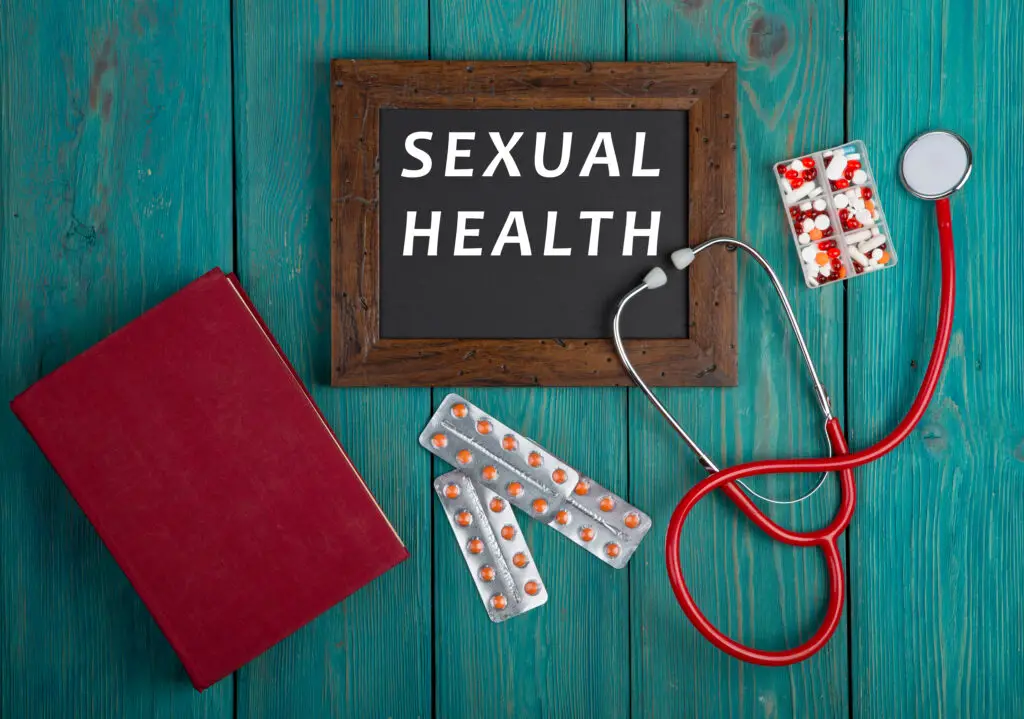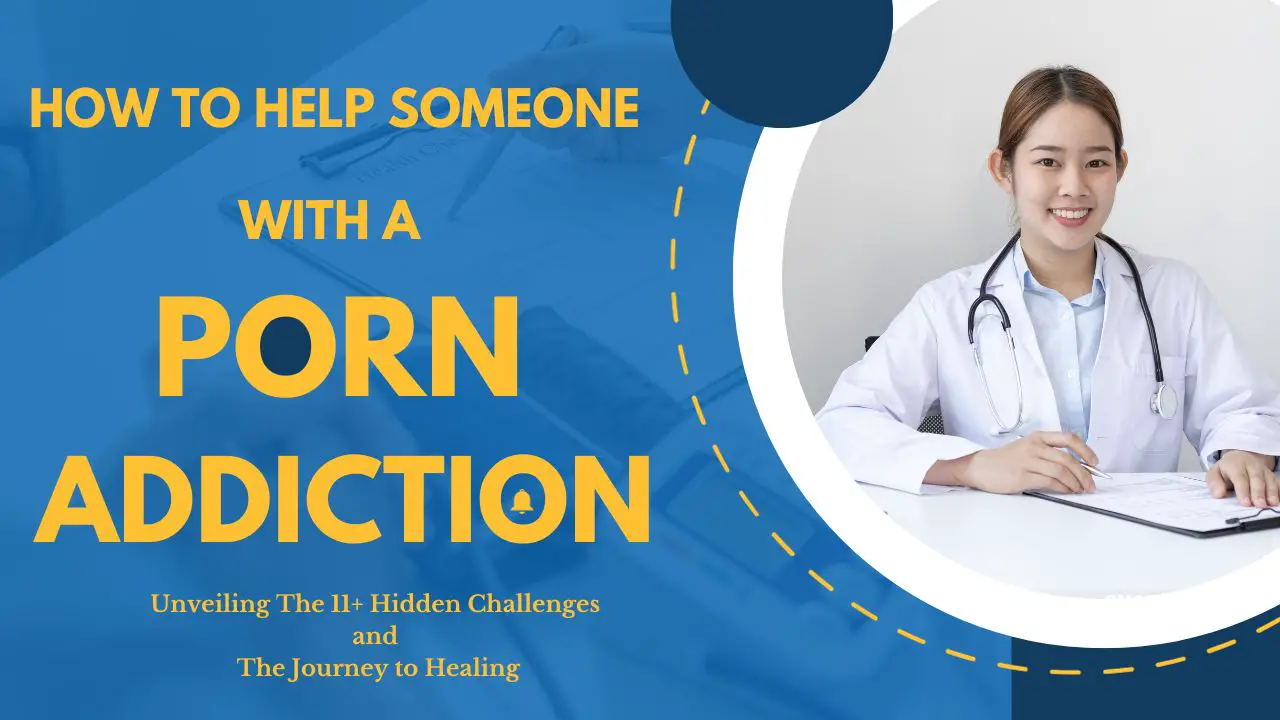In the age of digital technology, where access to information and content is just a click away, the issue of porn addiction has emerged as a significant challenge for many individuals. In this comprehensive article, we will delve deep into the world of porn addiction, exploring its causes, effects, and the path to recovery. We’ll break down the complex subject into a series of interconnected topics, ensuring you gain a holistic understanding of this often hidden struggle.
Table of Contents
Introduction
Definition of Porn Addiction
Porn addiction, also known as compulsive sexual behavior disorder or pornography use disorder, is a condition characterized by an individual’s compulsive and excessive consumption of pornography. This behavior leads to negative consequences in various aspects of their life, including relationships, work, and mental well-being.
Excessive consumption of pornography goes beyond the realm of normal sexual exploration and can become a compulsive behavior. Individuals struggling with porn addiction often find themselves unable to control their consumption, leading to various adverse consequences in their lives.
Prevalence and Impact
The proliferation of internet access and the easy availability of explicit content have contributed to the growing concern of porn addiction. This issue affects individuals of all genders and ages, often leading to adverse consequences in their personal and professional lives.
The prevalence of porn addiction is a significant concern in the digital age. The easy access to explicit content and the discreet nature of consumption have contributed to its widespread occurrence. It’s essential to understand the impact of porn addiction on individuals and society as a whole.
Purpose and Scope of the Article
This article aims to provide a comprehensive understanding of porn addiction, from its neurological underpinnings to its emotional and social impact. We will explore the causes, signs, and symptoms of addiction, as well as the available treatment options. Furthermore, we’ll discuss preventative measures and offer insights into supporting loved ones who may be struggling with this condition.
The purpose of this article is to shed light on a prevalent yet often misunderstood issue. We seek to provide valuable information for those affected by porn addiction, their loved ones, and professionals working in the field. By examining the subject from multiple angles, we aim to offer a comprehensive resource for better understanding and addressing this complex problem.

Understanding Porn Addiction
Neurological Mechanisms
The brain’s response to pornography is a complex interplay of neurochemicals and pathways. Understanding these mechanisms is crucial in comprehending why some individuals become addicted to explicit content.
Recent research has provided insights into how the brain responds to pornography. The release of neurotransmitters, such as dopamine, during the consumption of explicit content can create a pleasurable and rewarding experience. Over time, this can lead to addiction as individuals seek to replicate this sensation.
Behavioral Patterns
Porn addiction often follows a pattern of escalation, similar to that seen in substance abuse. We will examine how individuals may develop tolerance to certain types of content and seek out increasingly explicit material.
Just like with substance addiction, individuals often build tolerance to the content they consume. As a result, they may seek more explicit and extreme material to achieve the same level of satisfaction. This pattern of escalation is a hallmark of addiction.
Psychological Aspects
The emotional and psychological factors that contribute to porn addiction will be explored. These include stress, trauma, and the role of fantasy in coping with life’s challenges.
Psychological factors can play a significant role in the development of porn addiction. Individuals may turn to explicit content as a coping mechanism for stress, trauma, or emotional issues. Understanding these psychological aspects is vital in addressing the root causes of addiction.
Causes and Triggers
Early Exposure to Pornography
Early exposure to explicit content, whether accidental or deliberate, can significantly influence an individual’s vulnerability to addiction. We will discuss the implications of childhood exposure to pornography.
Exposure to explicit content at a young age can have lasting effects on an individual’s relationship with pornography. It can shape their attitudes and desires, potentially making them more susceptible to addiction later in life.
Psychological Factors
Various psychological factors, such as low self-esteem and emotional trauma, can contribute to the development of addiction. We will delve into how these factors interact with porn consumption.
Low self-esteem, unresolved trauma, and emotional struggles can make individuals more susceptible to using pornography as a means of escape or self-soothing. Addressing these psychological factors is crucial in addiction recovery.
Environmental Influences
The environment in which an individual grows up and lives can play a significant role in the development of addiction. This section will examine how societal and cultural factors impact addiction rates.
Societal and cultural factors, such as the availability of explicit content and societal attitudes towards sex, can influence an individual’s relationship with pornography. Understanding these environmental influences is essential in addressing addiction on a broader scale.

Signs and Symptoms
Emotional and Behavioral Indicators
Recognizing the signs of porn addiction in oneself or a loved one is essential. We will discuss the emotional and behavioral changes that often accompany this condition.
Emotional and behavioral indicators can provide early warning signs of addiction. These may include increased secrecy, irritability, and withdrawal from social activities. Identifying these signs can be the first step towards seeking help.
Physical and Health-Related Signs
Beyond psychological changes, addiction can have physical implications. This section will explore the potential health risks associated with compulsive pornography consumption.
Physical signs can manifest as sexual dysfunction, sleep disturbances, and changes in physical appearance. These consequences of addiction can have a significant impact on an individual’s overall health and well-being.
Social and Relationship Consequences
One of the most significant impacts of porn addiction is on personal relationships. We’ll investigate how addiction can strain relationships and lead to social isolation.
Addiction can erode the trust and intimacy in personal relationships, leading to conflicts and misunderstandings. Social isolation often follows as individuals prioritize their addiction over social interactions.
The Impact on Relationships
Romantic Relationships
The effects of porn addiction on romantic partnerships can be profound. We will discuss the challenges it presents and ways to rebuild trust and intimacy.
Porn addiction can strain romantic relationships, leading to feelings of betrayal and inadequacy. Addressing these challenges and finding ways to rebuild trust is a crucial aspect of recovery.
Family Dynamics
The influence of addiction extends to family dynamics. We’ll explore how it can affect familial relationships, including those between parents and children.
Family dynamics can be profoundly affected by addiction, leading to strained relationships between parents and children. Understanding these dynamics is essential for comprehensive recovery.
Social Isolation
As addiction progresses, it often leads to social withdrawal and isolation. This section will address the psychological and emotional toll of feeling disconnected from the world.
Social isolation is a common consequence of addiction as individuals prioritize their addiction over social interactions. The emotional toll of feeling disconnected from the world can be substantial.

Health Implications
Mental Health Consequences
Porn addiction is closely tied to mental health issues, including anxiety and depression. We will dissect the relationship between these conditions and pornography consumption.
The relationship between porn addiction and mental health issues is complex. Many individuals struggling with addiction also experience anxiety and depression. Addressing these mental health consequences is vital for recovery.
Physical Health Risks
The physical health risks associated with addiction, such as erectile dysfunction and sexual dysfunction, will be explained in detail.
Physical health risks, including sexual dysfunction, can have a significant impact on an individual’s quality of life. Understanding these risks is essential for those seeking recovery.
Impact on Cognitive Function
The addictive nature of porn can affect cognitive function, including attention span and decision-making. We will examine the cognitive implications of excessive pornography use.
Cognitive function can be impaired by addiction, affecting an individual’s ability to concentrate and make sound decisions. Recognizing these cognitive implications is vital for recovery.
Assessment and Diagnosis
Screening Tools
Professionals use specific screening tools to assess porn addiction. We will introduce some of the common assessments used to diagnose the condition.
Screening tools, such as questionnaires and interviews, are valuable in assessing the extent of addiction. These tools provide a structured way to diagnose the condition and determine the appropriate treatment.
Professional Evaluation
A professional evaluation by a therapist or counselor is often necessary to determine the extent of addiction. This section will explain the evaluation process.
Professional evaluations offer a comprehensive assessment of an individual’s addiction, taking into account their psychological and emotional well-being. These evaluations are essential for developing a tailored treatment plan.
Differential Diagnosis
Distinguishing porn addiction from other sexual disorders can be challenging. We’ll explore the criteria that help differentiate this disorder from similar conditions.
It’s essential to differentiate porn addiction from other sexual disorders, such as hypersexuality. Understanding the criteria for diagnosis is crucial in providing individuals with the right treatment.

Treatment and Recovery
Therapy and Counseling Options
Therapeutic approaches, including cognitive-behavioral therapy and group therapy, are integral to the recovery process. We’ll discuss these options and their effectiveness.
Therapeutic approaches, such as cognitive-behavioral therapy, aim to address the underlying causes of addiction and develop coping strategies. Group therapy offers a supportive environment for individuals to share their experiences and insights.
Support Groups
Support groups offer people a feeling of belonging and empathy. We will delve into the benefits of joining such groups on the path to recovery.
Support groups offer a unique opportunity for individuals to connect with others facing similar challenges. These groups provide a safe space for sharing experiences and receiving encouragement.
Medications
In some cases, medications may be prescribed to help individuals manage the cravings associated with addiction. We will examine the role of medications in the recovery process.
Medications can be a valuable part of addiction treatment, helping individuals manage their cravings and reduce the risk of relapse. Understanding the potential medications used in addiction recovery is essential.
Prevention Strategies
Parental Controls and Education
Preventing early exposure to explicit content is essential. We will explore how parents can protect their children and educate them about the potential dangers of pornography.
Parents play a crucial role in preventing early exposure to explicit content. Implementing parental controls and educating children about the potential risks of pornography is essential in curbing addiction.
Public Awareness Campaigns
Public awareness campaigns can play a crucial role in educating individuals about the risks of addiction. We will discuss the impact of these campaigns on society.
Public awareness campaigns help destigmatize addiction and provide individuals with the information they need to make informed choices. Understanding the role of these campaigns is vital in addressing addiction on a broader scale.
Early Intervention
Identifying addiction in its early stages is key to successful treatment. We’ll explore strategies for early intervention and support.
Early intervention is essential in preventing addiction from progressing. Recognizing the signs of addiction and intervening early can significantly improve the chances of successful recovery.

Case Studies
Real-Life Stories of Recovery
Real-life case studies of individuals who have successfully overcome porn addiction will inspire and offer hope to those currently struggling.
Hearing the stories of individuals who have successfully recovered from addiction can provide inspiration and motivation. These case studies illustrate that recovery is possible, even in the face of significant challenges.
Success Stories in Overcoming Porn Addiction
We’ll share success stories from individuals who have regained control of their lives after battling addiction, illustrating the potential for recovery.
Success stories offer hope and encouragement to those currently struggling with addiction. These stories show that recovery is possible and that individuals can rebuild their lives.
Lessons Learned from Case Studies
Drawing lessons from case studies, we’ll highlight the common themes and strategies that contribute to recovery.
By analyzing the common themes and strategies that have led to recovery in case studies, we can gain valuable insights into effective approaches to overcoming addiction.
Legal and Ethical Aspects
Age Verification and Legal Regulations
Age verification and legal regulations are critical in preventing minors from accessing explicit content. We will explore these measures and their effectiveness.
Ensuring that explicit content is not accessible to minors is a crucial aspect of addressing addiction. Age verification and legal regulations help protect vulnerable individuals from potential harm.
Ethical Considerations in the Porn Industry
The ethical considerations surrounding the production and distribution of pornography will be discussed, shedding light on industry practices.
Understanding the ethical considerations in the pornography industry can provide insights into the production and distribution of explicit content. It’s essential to consider these factors in the broader context of addiction.
Privacy and Consent
The matter of privacy and consent in producing and disseminating explicit content is a significant and intricate facet of the discussions surrounding porn addiction.
Privacy and consent are essential elements of ethical and legal considerations in the pornography industry. Understanding the complexities of these issues is vital for a comprehensive understanding of the addiction landscape.
Self-Care for Supporters
Supporting a loved one with addiction can be emotionally challenging. We’ll explore self-care strategies for those offering support.
Assisting a loved one with addiction can affect your emotional well-being. It’s essential to prioritize self-care to ensure you can continue providing effective support.

Emerging Trends
As we continue to explore the multifaceted issue of porn addiction, it’s essential to consider the ever-evolving landscape of this challenge. Emerging trends in technology, research, and treatment play a significant role in shaping our understanding of addiction and the strategies used to combat it.
1. Virtual Reality (VR) and Addiction
Virtual reality technology is making waves in the world of adult entertainment. While VR offers immersive experiences, it also poses a new challenge in the realm of addiction. Individuals can now engage with explicit content in an even more realistic and compelling way, potentially increasing the risk of addiction.
Researchers are beginning to investigate the implications of VR technology on addiction rates. This exploration can help inform strategies to address this emerging trend and develop interventions to support those at risk.
2. Advanced Data Analytics
In an era of big data, advanced analytics are being used to gain insights into addiction patterns. By analyzing vast amounts of data related to online behavior, researchers can identify trends, triggers, and risk factors associated with porn addiction.
These analytics allow for more targeted prevention and treatment strategies. Additionally, they help professionals understand the evolving landscape of addiction in the digital age.
3. Online Support Platforms
The rise of online support platforms has created new opportunities for individuals to connect with peers and professionals who can offer guidance and encouragement. These platforms are designed to facilitate real-time discussions, sharing experiences, and accessing expert advice.
Online support platforms can be particularly valuable for individuals who may be hesitant to seek in-person support. They provide a sense of community and understanding, reducing the isolation often associated with addiction.
4. Legal and Ethical Debates
The legal and ethical considerations surrounding the pornography industry continue to be a topic of debate. As society’s views on explicit content evolve, questions arise about the regulation and ethics of production and distribution.
Ongoing discussions about privacy, consent, and industry practices are essential in shaping public perception and policies related to porn addiction. These debates influence the industry’s practices and its impact on addiction rates.
5. Cultural Awareness and Sensitivity
Cultural awareness and sensitivity are increasingly important in addressing porn addiction. Different cultures and societies may have varying attitudes toward sex, sexuality, and explicit content.
Understanding and respecting these cultural differences is vital in tailoring prevention and treatment approaches to diverse populations. It also plays a role in reducing stigma and promoting awareness.
6. Integration with Mental Health Services
Recognizing the close relationship between addiction and mental health, many treatment centers are integrating addiction services with mental health care. This approach acknowledges the complex interplay between addiction and underlying psychological issues.
By offering comprehensive care that addresses both addiction and mental health concerns, treatment centers aim to improve long-term outcomes and support individuals on their path to recovery.

New Approaches to Treatment
Innovative approaches to treating addiction, including online therapy and mobile apps, are on the rise. We’ll explore these new methods.
The digital age has brought about new possibilities for addiction treatment. These approaches leverage technology to offer accessible and effective solutions for individuals struggling with porn addiction. Here are some of the emerging trends in addiction treatment:
Online Therapy
Online therapy, also known as teletherapy or telehealth, is gaining popularity as a convenient and effective way to address addiction. With the help of secure and confidential video conferencing platforms, individuals can connect with licensed therapists and counselors from the comfort of their homes. This approach is particularly beneficial for those who may be hesitant to seek in-person treatment due to privacy concerns.
Online therapy provides a supportive and confidential environment where individuals can explore the underlying causes of their addiction and develop coping strategies. Therapists use evidence-based techniques to assist clients in their recovery journey. This approach offers flexibility and convenience, making it an attractive option for many.
Mobile Apps
The proliferation of smartphones has given rise to a plethora of mobile apps designed to support addiction recovery. These apps offer a range of features, from tracking progress and providing motivational messages to connecting users with support communities.
One notable feature of these apps is the ability to monitor and manage triggers and cravings. Users can log their thoughts and feelings, helping them gain insight into their addiction patterns. Many apps also provide a community aspect, allowing users to share their experiences and receive support from others on the same journey.
Virtual Support Groups
Virtual support groups are an essential component of addiction recovery. These online communities connect individuals facing similar challenges, creating a sense of belonging and understanding. Many people find that sharing their experiences and listening to the stories of others in a supportive environment can be incredibly empowering.
Virtual support groups often use video conferencing or chat platforms to facilitate meetings. Participants can access these groups from anywhere, eliminating geographical barriers and offering a diverse range of perspectives and experiences.

Future Research Directions
As we look ahead, it’s essential to consider the future of research into porn addiction. Ongoing research provides opportunities to better understand the condition and develop more effective prevention and treatment strategies.
Neurobiological Research
Advancements in neurobiology have shed light on the brain’s response to pornography. Further research in this field may lead to a deeper understanding of the neural pathways and mechanisms involved in addiction. This understanding can guide the creation of focused interventions.
Behavioral Studies
Behavioral studies continue to explore the patterns and triggers that contribute to addiction. By identifying specific behaviors and environmental factors that lead to addiction, researchers can develop more precise preventative measures.
Cultural and Societal Impact
Research into the cultural and societal impact of pornography and addiction is crucial. This includes examining how changing cultural norms and attitudes toward sex and explicit content influence addiction rates.
Ethical Considerations
Ethical considerations surrounding the pornography industry and its practices will remain a topic of research. Understanding the industry’s impact on addiction and society can lead to informed policy decisions and awareness campaigns.
Intervention and Treatment Effectiveness
Ongoing research is necessary to evaluate the effectiveness of various intervention and treatment approaches. This includes assessing the long-term outcomes of different therapeutic modalities and support methods.

Resources and Helplines
In the journey to overcome porn addiction, having access to the right resources and support is crucial. Here, we provide a comprehensive list of resources, hotlines, and helplines that individuals and their loved ones can turn to for assistance and guidance.
1. National Helplines and Crisis Services
- National Suicide Prevention Lifeline: If you or someone you know is struggling with thoughts of self-harm or suicide related to addiction, reach out to the National Suicide Prevention Lifeline at 1-800-273-8255. This 24/7 helpline offers confidential support and resources.
- National Alliance on Mental Illness (NAMI): NAMI provides information, support, and resources for individuals dealing with mental health and addiction issues. Visit their website (www.nami.org) or call their helpline at 1-800-950-NAMI (1-800-950-6264).
2. Specialized Addiction Support
- Sex and Love Addicts Anonymous (SLAA): SLAA is a fellowship of individuals who share their experience, strength, and hope in dealing with sex and love addiction. They offer meetings and support. Visit their website (www.slaafws.org) to find a local meeting.
- SMART Recovery: SMART Recovery is a science-based program to help people manage their recovery from any type of addictive behavior, including pornography addiction. Their website (www.smartrecovery.org) provides resources and online meetings.
3. Professional Help and Treatment Centers
- American Psychological Association (APA): The APA’s website (www.apa.org) offers a directory of licensed psychologists and mental health professionals who specialize in addiction and related issues. You have the option to locate a therapist or counselor near your location.
- Substance Abuse and Mental Health Services Administration (SAMHSA): SAMHSA provides a Behavioral Health Treatment Services Locator on their website (www.findtreatment.samhsa.gov) to help you find substance abuse and mental health treatment centers near you.
4. Online Resources and Communities
- NoFap: NoFap is an online community and resource center for individuals looking to overcome pornography addiction and related issues. They provide forums, articles, and tools to support recovery. Visit their website (www.nofap.com) for more information.
- Recovery.org: Recovery.org offers a wealth of information on addiction recovery, including articles, treatment options, and a directory of treatment centers. You can discover valuable resources and support on their website, which is located at (www.recovery.org).
5. Local Support Groups
- Local Support Groups: Many cities and regions have local support groups for addiction recovery. These groups can provide in-person meetings and a sense of community. Search online or inquire with local mental health organizations to find a group near you.
6. Educational Resources
- Your Brain on Porn: This website (www.yourbrainonporn.com) offers a variety of resources and articles on the science of addiction and recovery. It provides valuable insights into the neurological aspects of porn addiction.
- Psychology Today: Psychology Today (www.psychologytoday.com) features articles, blogs, and a therapist directory. It’s a valuable source for information on addiction, mental health, and therapy.

Conclusion:
In this comprehensive article, we’ve explored the intricate landscape of porn addiction, from its causes and signs to its impact on relationships and health. We’ve delved into various treatment options, including traditional therapy and innovative approaches such as online therapy and mobile apps.
Understanding the neurological, psychological, and environmental factors that contribute to addiction is essential for both individuals seeking recovery and those who support them. Prevention strategies, including parental controls, public awareness campaigns, and early intervention, are crucial in curbing the prevalence of porn addiction and promoting a healthier and more informed approach to explicit content.
Assisting our loved ones through addiction is both a compassionate and demanding task. Recognizing the signs of addiction, offering help, and practicing self-care are vital components of this journey. Frequently asked questions and expert responses provide valuable information for those seeking clarity on the complexities of addiction.
As technology continues to evolve, it offers both challenges and solutions in the realm of addiction. Online therapy, mobile apps, and virtual support groups provide accessible and effective options for individuals on their path to recovery.
Looking to the future, ongoing research into the neurobiological, behavioral, cultural, and ethical aspects of addiction will continue to inform our understanding and strategies for prevention and treatment.
The emerging trends in addiction, such as the impact of virtual reality, advanced data analytics, and online support platforms, provide opportunities to address addiction in a changing world. Legal and ethical debates, cultural awareness, and integration with mental health services are vital aspects of shaping the landscape of addiction treatment.
In closing, we encourage those who may be struggling with porn addiction to seek help and know that recovery is possible. The path to recovery may be challenging, but with support, understanding, and the right resources, individuals can regain control of their lives and build a healthier, happier future.

Frequently Asked Questions (FAQs):
1. What is porn addiction, and how is it defined?
Porn addiction, also known as compulsive sexual behavior disorder, is characterized by an excessive and uncontrollable consumption of pornography that leads to negative consequences in an individual’s life. It is marked by a persistent and recurring pattern of viewing explicit content, even when it disrupts daily functioning and causes distress.
2. What are the common signs and symptoms of porn addiction?
Common signs and symptoms of porn addiction may include increased consumption of explicit content, unsuccessful attempts to cut down or control usage, neglect of other responsibilities, withdrawal symptoms when not using pornography, and a continued pattern of consumption despite adverse consequences. It may also lead to issues in relationships and mental health.
3. Is porn addiction a real condition, or is it just a moral issue?
Porn addiction is recognized as a real and clinically significant condition by mental health professionals. It is not solely a moral issue but rather a behavioral and psychological disorder that can have detrimental effects on an individual’s life. Addiction is a complex issue with biological, psychological, and social components.
4. How can I find assistance for overcoming porn addiction?
If you or someone you know is struggling with porn addiction, seeking help is a crucial step. You can contact mental health experts, addiction treatment facilities, or groups tailored to addressing issues related to sex and love addiction. The resources and helplines listed in the article can also provide valuable guidance and support.
5. Are there effective treatments for porn addiction?
Yes, there are effective treatments for porn addiction. Therapy, including cognitive-behavioral therapy, has been shown to be effective in addressing the underlying causes of addiction. Support groups, both in-person and online, can provide valuable peer support. Mobile apps and online therapy platforms are also emerging as innovative treatment options.
6. Can I recover from porn addiction?
Recovery from porn addiction is possible. Many individuals have successfully overcome addiction with the right support, treatment, and determination. Recognizing the signs of addiction, seeking help, and building a support network are essential steps in the recovery process.
7. Are there any tools or apps that can help with recovery?
Yes, there are tools and apps designed to support recovery from addiction. These apps can help individuals track their progress, manage triggers and cravings, and connect with support communities. NoFap is one such online resource and community dedicated to overcoming porn addiction.
8. What can I do to prevent porn addiction in children and teenagers?
Preventing early exposure to explicit content is vital in reducing the risk of addiction in children and teenagers. Implementing parental controls on devices and educating young individuals about the potential dangers of pornography are effective prevention strategies. Open communication with children about healthy sexuality is also essential.
9. Are there legal and ethical considerations in the pornography industry related to addiction?
Yes, there are legal and ethical considerations in the pornography industry. These considerations include age verification to prevent minors from accessing explicit content, privacy and consent issues in content creation, and debates surrounding industry practices. Addressing these concerns is essential in shaping policies and public awareness campaigns related to addiction.
10. How can I support a loved one struggling with porn addiction?
To assist a family member or friend in their journey through addiction, it’s essential to begin by identifying the signs and symptoms. Approach the individual with care and understanding, offer help without judgment, and encourage them to seek professional assistance. Practicing self-care as a supporter is crucial to maintaining your emotional well-being during this challenging journey.

